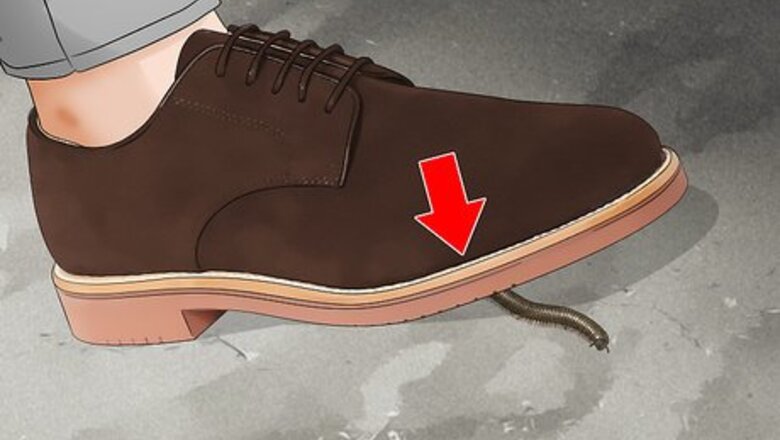
views
Removing Millipedes from Your Home
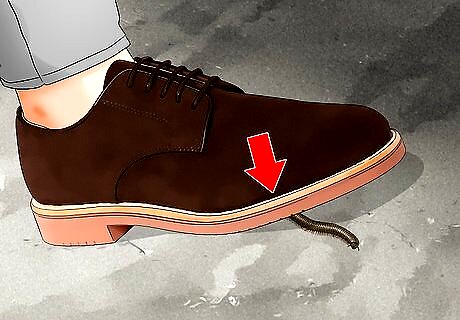
Kill the millipedes on sight. As soon as you spot a millipede in your house, stomp or squish it. Do this every time you see a millipede instead of capturing it and releasing it into your yard. Millipedes usually won't invade your home in a large swarm, so killing millipedes when you see them is often effective.

Sweep or vacuum up the millipedes if you'd rather not touch them. If you're a little squeamish about killing the millipedes or even getting close to them, sweep or vacuum up the millipedes and dump them in the trash can. Then tie up the bag and throw it in a covered dumpster outside. Don't leave millipedes in your indoor trashcan because they can crawl out. If you happen to have a large number of millipedes in your home, use a shop vac to suck them up easily.

Spray an indoor pest spray if you don't want to touch the millipedes. If you prefer, purchase an indoor-safe pest control spray that's designed to kill millipedes. Spray it directly onto millipedes as soon as you see them. The spray should quickly kill them. Always follow the manufacturer's instructions and determine if they're safe to use around children or pets.
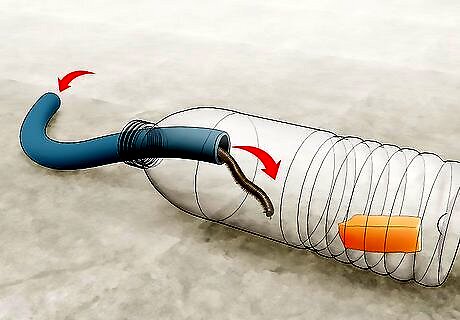
Set out a millipede trap to catch them in your house. Check the hardware store if you'd like to purchase a simple trap. Most millipede traps are designed with a light in the center that attracts the millipedes and sloped sides. This way the millipedes are attracted by the light and climb into the trap, but can't escape.Variation: To make your own millipede trap, connect 2 small plastic soda bottles and insert a small plastic tube. Place a bit of fruit into 1 of the bottles to act as bait for the millipedes. The millipedes will go through the tube and fall into the bottles without being able to get out.
Using Outdoor Repellents

Purchase a millipede insecticide. Go to a local gardening center, hardware store, or online to buy a chemical spray or powder. Look for a product that contains bendiocarb, carbaryl, cyfluthrin, or propoxur.Tip: If a product contains pyrethroids, you should spray it directly onto the millipedes instead of using it as an outdoor repellent. Always read the manufacturer's instructions and warnings before using the product.
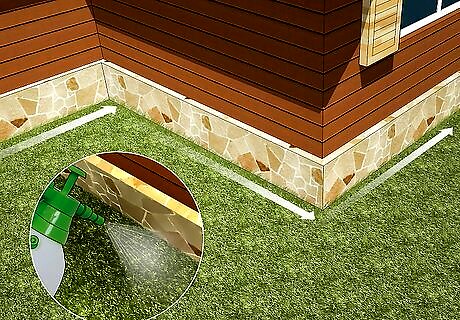
Apply the insecticide along the perimeter of your house. Spray or scatter the pesticides along the perimeter of your house according to the package instructions. When the millipedes cross over the insecticide, the chemicals will get onto their feet and gradually kill them. Remember to wear gloves to prevent the insecticide from irritating your skin. Check the package to determine how often to reapply the insecticide. If you used powder and live in a wet climate, you'll need to reapply it more frequently than if you used a liquid insecticide.

Treat the soil around outdoor hiding places. If you know where the millipedes gather outside, you can mix an outdoor insecticide into the soil or debris there. For example, spread the insecticide into mulched flower beds. The chemicals will eventually get inside the millipedes and poison them. For a more natural way to treat the soil, mix a few handfuls of dry wood ash into the soil around your home. The wood ash will dry out the rest of the soil so millipedes won't want to lay their eggs.
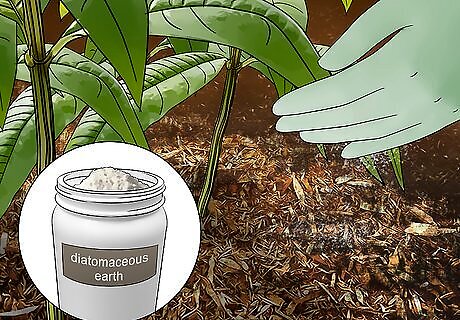
Spread diatomaceous earth or boric acid in the soil around your yard. Purchase either of these powders from garden centers and sprinkle it into the soil where the millipedes are congregating. Both products will make microscopic cuts that dehydrate and kill the millipedes. The boric acid also acts as a stomach poison that will kill the millipedes. You can use either of these products in your home, such as in the cracks or damp spots, but you shouldn't use them if you have kids or pets.
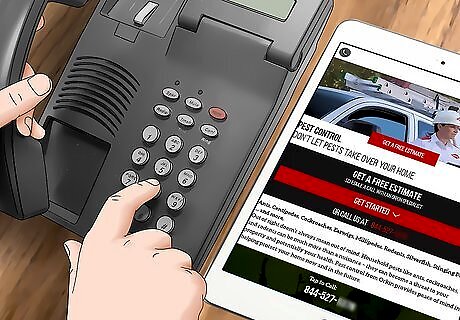
Hire a professional if you're still struggling to get rid of millipedes. If you've removed the millipedes from your house, treated your yard, and still have a millipede problem, call a pest control professional. Although this will cost money, it's a good idea if you're also experiencing another pest outbreak, such as centipedes. To find a pest control professional, ask your neighbors for recommendations, read reviews online, and check local listings.
Preventing Millipede Outbreaks

Trim your lawn regularly and remove piles of leaves or debris. Long grass, piles of leaves, and mulch right next to your home make great hiding places for millipedes. Mow your lawn to keep the grass short and remove leaf piles that are near your house. If you have mulch, move it at least 2 to 3 feet (61 to 91 cm) away from the foundation of your home. Common millipede hiding places also include trash piles, rocks, boards, and compost.
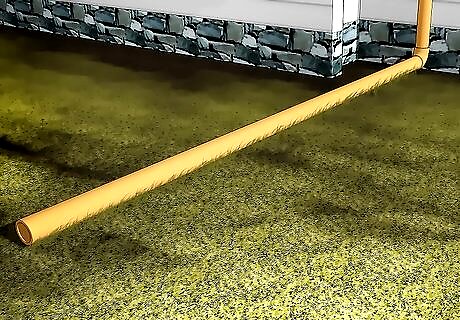
Divert rainwater away from the house. Since millipedes love moist environments, keep your home as dry as possible. Clean the gutters and check to see if downspouts are properly directing water away from your house. If you live on a floodplain, you may need to install a sump pump to keep water out of your basement. If you have a constant problem with moisture and millipedes, use extended gutters to divert the rainwater as far away from your house as possible.

Seal cracks or crevices leading into the home. Check the walls, windows, and doors of your home for ways that millipedes could be getting in. Apply weather stripping, seal cracks, and apply caulking to prevent millipedes from getting inside. Some millipedes can crawl through vents. To prevent this from happening, install screens on the outside of each vent space.
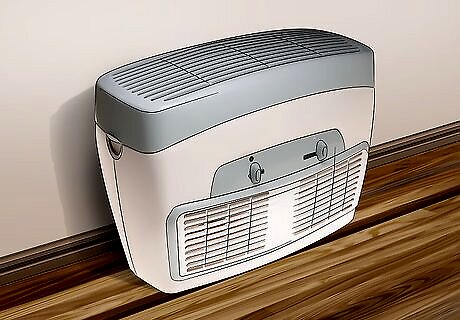
Use a dehumidifier to remove excess moisture in your house. Millipedes are drawn to moisture, so set up a dehumidifier to dry out your house. If you're unsure if your house is moist, purchase an inexpensive hygrometer from the hardware store. It will show you the humidity level in your house. Run the dehumidifier until the humidity level is under 50%. Pay special attention to the subfloor crawl space and basement, if your house has these areas. These spaces are usually among the dampest, so if millipedes are entering your home, it might be through these locations.Did You Know? Both dehumidifiers and air conditioners can help draw moisture out of the air, but in really damp areas of the house, they may not be enough. Consider running multiple machines or moving 1 throughout the house.

Raise chickens that will feed on the millipedes. Check your city laws to see if you're allowed to keep chickens in your yard. Chickens eat many garden pests, including millipedes so they're a great natural deterrent. Since chickens eat a lot throughout the day, you probably only need a few to control the millipede population in your yard.










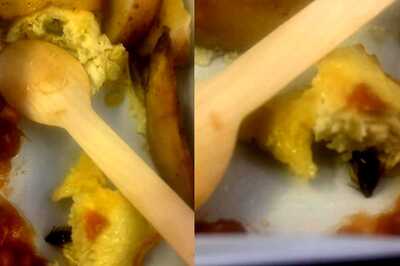




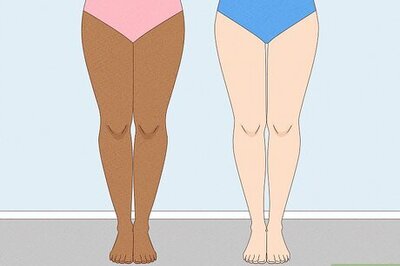
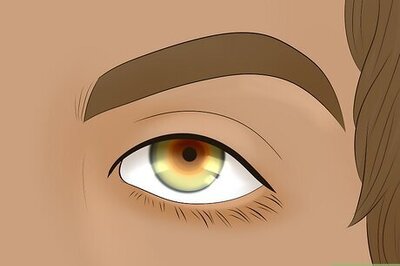



Comments
0 comment